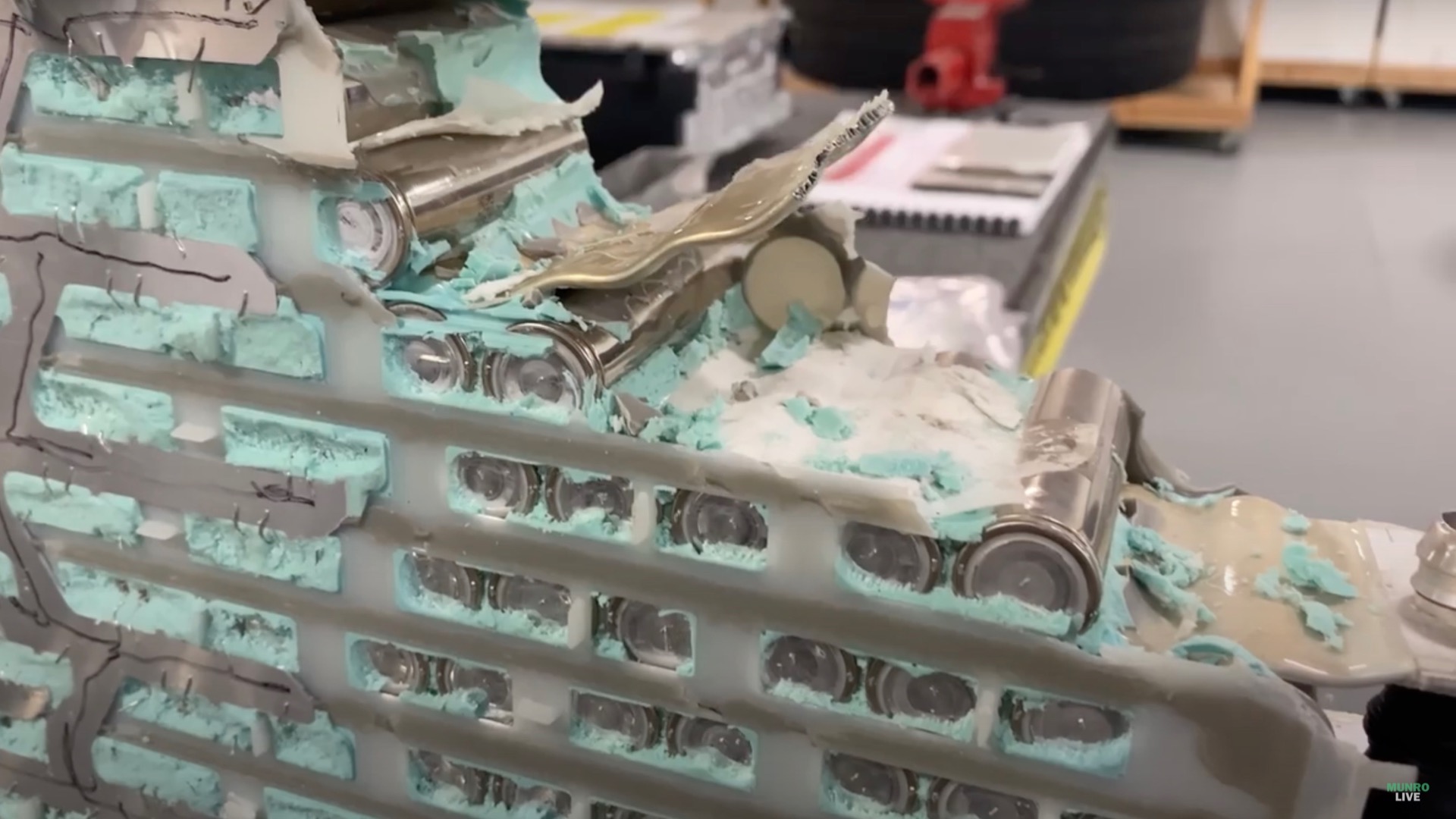californiamilleghia said:
When you are running battery packs harder than designed how to you keep them cool ?
I know there have been speed runs at Laguna Seca but do not know how many laps and if the batteries got close to Max temp ,
Does the dash screen show battery temp ?
There are folks who do track days in Model 3s, from what I understand (I've never driven one myself) they'll do 3-5 laps at full power and then it will start to derate it a little bit. This is unlike the older air-cooled Model S that would maybe get 1 lap before losing a ton of power.
Presumably if you wanted to upgrade the cooling on the batteries you'd do it the same way you do on a normal car -- bigger radiator, better airflow, etc. Or perhaps you just put a heat exchanger into a cooler full of ice and make a coolshirt for your batteries! :)

Oapfu said:
Is it possible to 'simply' drop the battery pack out of a Tesla Model 3, open up the case, chuck some stuff out to make it lighter, reinstall the pack back into the car, and come out ahead? Nope. Definitively. B/c Tesla batteries have all the modules in series (cannot remove any modules w/o losing voltage), and all the cells inside each module are glued together into a true monolith using 3x types of adhesive. Realistically you either use 'em as-is, or you start over and completely DIY your own pack. See "disassembly" vid1, vid2

I am not saying that a lighter battery is impossible, I am only saying that you cannot get there by starting with the OE battery.
Coincidentally, "b is for build" is disassembling a Model 3 for some sort of body swap, and went 1 sec faster 0-60 with extreme weight reduction: https://youtu.be/z27t9uHp7nY?t=1101
Just the last month Tesla started to change the adhesive they use because they found it made the batteries underperform. Less life in cold weather, poor power transfer etc. the Tesla web sites talk about it.
Superfast Matt has his Jaguar stacking the model 3 packs on top of each other. He kept the cooling system together but I believe he added an overflow tank to properly burp it.
The Chevy Volt batteries have obvious coolant passages on the sides and are a decent size; they're still a great option as this pic shows, where they sandwich these cooling plates in between every other cell.
It looks like Tesla uses a cooling loop that touches one long side of every cell.

In reply to MrJoshua :
Tesla has at least four different battery designs in production. The S and X use one based on many 18650 cells. The majority of 3/Y cars use 2170 cells - that's what you can see in the picture above. The newest design is the structural pack built around large 4680 cells in a honeycomb along with a very strong foam to make it rigid. I think it's used in the Plaid and the Gigapress-built cars. And then there are the prismatic LFP ones.
The cars all look the same, but there are a whole lot of changes happening under the skin. You can lose a lot of time just reading up on the 4680, it's a pretty cool piece of optimization.
In reply to MrJoshua :
Yep! That's completely right. It's actually a big question in EVs what's a better method for keeping them cool: Tesla side-cools the cells, Lucid bonds a cooling aluminum plate to the bottom, RIMAC is attempting complete immersion with a sort of "manifold" to keep coolant from getting onto the electrical bits, and GM (in the images I showed above) cools the pouch cells by drawing heat either out of the positive/negative tabs or through cooling plates.
I also know a guy, Luke Workman- the lead designer of the Zero Motorcycle battery- who's opinion is that we're soon moving towards using that fireproof paste to do double-duty as a heat sink and fire retardant. EBikers are trying the same, since that paste can also act to prevent water damage from moisture and keep electrical contacts from rusting; my personal bet is we'll see packs of cells that are pasted in that manner with attached cooling plates will be the Cooling future for EVs.
BatteryDesign.net has much info about batteries and looks like it is reasonably legit (not robot-collected BS). Since we're talking about cooling now: https://www.batterydesign.net/tag/cooling/
Frenchy mentioned Formula E, here's an analysis of the 2nd gen 2019-2021 battery which used "off-the-shelf" 3Ah 18650 cells. 1st gen was pouch cells, no info about the latest gen batteries. https://www.batterydesign.net/formula-e-battery-2019-21/
The original question was how to improve performance of a Model 3. One 'obvious' approach is to put the batteries and drive unit into a different vehicle: https://www.diyelectriccar.com/threads/model-3-battery-pack-for-tesla-cobra-ev.203121/


































